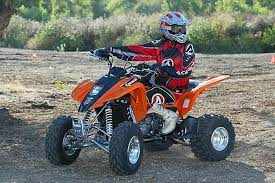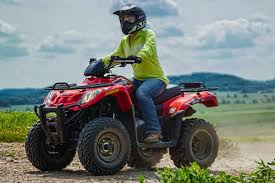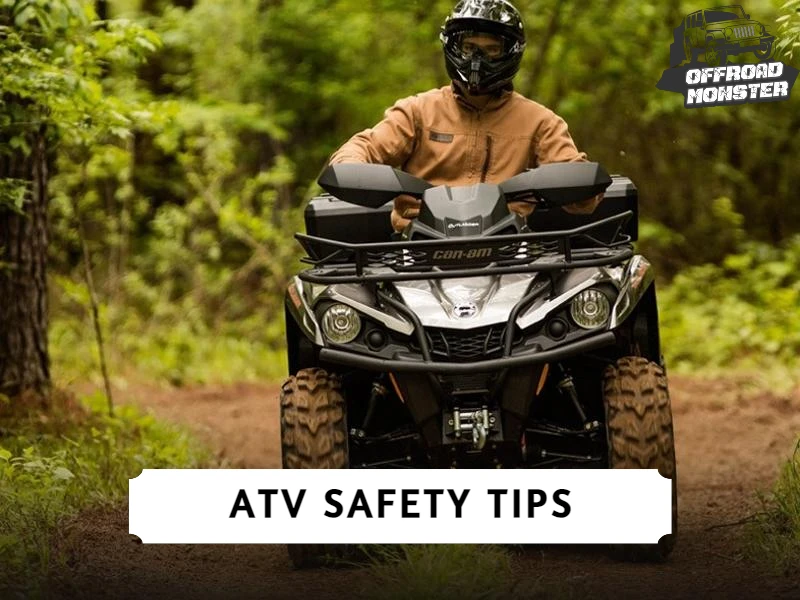All-terrain vehicles (ATVs) are a popular way to explore off-road trails and have fun in the great outdoors. However, riding an ATV can also be dangerous, especially for those who don’t take the proper safety precautions. That’s why it’s essential to know the right ATV safety tips before hitting the trails.
By following simple safety rules and being aware of potential hazards, riders can avoid accidents and injuries. Wearing a helmet and other protective gear is crucial to prevent head injuries and other serious harm. Additionally, ATV riders should follow speed limits, avoid riding on paved roads, and never ride under the influence of drugs or alcohol.
In this post, we’ll provide a comprehensive guide to ATV safety tips, including the importance of proper gear, how to properly maintain an ATV, and how to stay safe while riding. Whether you’re a seasoned rider or a newbie, these tips will help you stay safe while enjoying your off-road adventures.
ATV Safety Tips:
ATVs, or all-terrain vehicles, can be a lot of fun, but they can also be dangerous if not used safely. It’s important to follow these ATV safety tips to ensure that you and your loved ones stay safe while riding:
Here is the list of the most common ATV Safety Tips That Save Your Life:
1. Wear Protective Gear
2. Take a Safety Course
3. Don’t Drink and Ride
4. Don’t Overload the ATV
5. Never Ride on Paved Road
6. Know the ATV Rule of State
7. Never Drive Three Wheelers
8. Maintain Safe Speed
9. Drive At Day Light
1. Wear Protective Gear:

When it comes to riding ATVs, wearing protective gear is the most important safety tip that you should follow. ATV riding can be a thrilling experience, but it can also be dangerous. Wearing the right protective gear can help minimize the risk of injury in case of an accident.
So, what are the essential pieces of protective gear that you should wear when riding an ATV? First and foremost, you should wear a helmet that should fit properly and snugly, and should never be worn backwards.
In addition to a helmet, you should also wear goggles or a face shield to protect your eyes from dust, debris, and insects. A long-sleeved shirt, pants, and gloves are also essential to protect your skin from cuts, scrapes, and burns.
Lastly, it is also recommended that you wear over-the-ankle boots that are specifically designed for ATV riding. These boots provide support and protection to your feet and ankles and can prevent serious injuries in case of an accident.
2. Take a Safety Course:
Before operating an ATV, it’s crucial to take a safety course that covers all aspects of ATV riding. Taking an ATV safety course can help you learn the proper way to ride and handle your ATV.
You’ll learn important safety tips and techniques, such as how to properly shift your weight, how to turn and brake, and how to navigate rough terrain. Many safety courses also cover ATV maintenance and repair, which can help prevent accidents caused by mechanical failure.
3. Don’t Drink and Ride:
Never ride an ATV while under the influence of drugs or alcohol. Impaired driving is a leading cause of ATV accidents, and it greatly increases your risk of injury or death. Studies show that nearly half of all ATV accidents involve alcohol or drugs.
It’s crucial to remember that an ATV is a powerful vehicle that requires focus, attention, and skill to operate safely. Alcohol and drugs impair your ability to navigate rough terrain, avoid obstacles, and make sound decisions. As a result, you’re more likely to lose control of the ATV, collapse with other riders, or fall off the vehicle.
4. Don’t Overload the ATV:

When it comes to riding an ATV, it’s essential to keep in mind that ATVs have weight limits and don’t carry heavy loads. Overloading can cause handling problems and increase the risk of an accident. In fact, many ATV accidents occur as a result of overloading.
To ensure your safety while riding an ATV, it’s essential to follow the manufacturer’s guidelines on weight limits and maximum payloads. Generally, an ATV can carry one or two riders, depending on its size and design. Carrying more than the recommended number of passengers can affect the vehicle’s stability and increase the risk of tipping over.
5. Never Ride on Paved Road:

ATVs brands designed ATVs for off-road use only and should never be ridden on paved roads. Paved roads pose a number of dangers to ATV riders, including increased risk of collision with other vehicles, decreased traction, and increased braking distance.
6. Know the ATV Rules of Your State:
It is important to know the ATV rules of your state before you start driving. Different states have different rules regarding the use of ATVs, and it is important to be aware of them to ensure your safety and the safety of others. Some states require riders to wear helmets and other protective gear, while others have specific age limits for ATV operators.
In addition, some states have designated trails and areas where ATVs are permitted, while others prohibit their use in certain areas. Knowing the rules of your state can help you avoid fines and legal problems, but more importantly, it can help you avoid accidents and injuries.
To learn about the ATV rules in your state, you can find your state ATV rules on the CPSC government website. They can provide you with the necessary information and resources to ensure you are following the rules and staying safe while riding your ATV.
7. Maintain Safe Speed Limit:
Maintaining a safe speed limit while riding an ATV is essential for your safety and the safety of others. ATVs are powerful machines that can reach high speeds, but driving too fast can lead to accidents and injuries. It is important to always follow the recommended speed limit for the area you are riding in.
Speed limits can vary depending on the terrain, weather conditions, and the presence of other riders or obstacles. It is important to be aware of your surroundings and adjust your speed accordingly. If you are riding in a group, make sure to stay at a safe distance from the rider in front of you to avoid collisions.
Additionally, it is important to avoid showing off or engaging in reckless behavior, as this can increase the risk of accidents and injuries. Always remember that safety should be your top priority while riding an ATV, and following the recommended speed limit can help ensure a fun and safe experience.
8. Never Drive Three Wheelers:

Three-wheeler ATVs are notoriously unstable, and they have been known to tip over easily, which can cause serious injuries or even death. If you currently own a three-wheeler ATV, it’s recommended that you replace it with a four-wheeler as soon as possible. Four-wheeler ATVs are much more stable and offer better control, making them a safer option for riders of all experience levels.
9. Drive ATV At Day light:

Daylight is a much safer time to ride an ATV than at night. Try to avoid driving an ATV at night because visibility is greatly reduced making it difficult to see obstacles or hazards on the trail.
Even if your ATV is equipped with headlights, they may not provide enough illumination to see clearly, especially if you are riding in an unfamiliar area.
Additionally, riding at night increases the risk of accidents and collisions with other vehicles, as well as wildlife that may be more active during the nighttime hours.
Therefore, it is highly recommended to always ride your ATV during daylight hours, preferably in areas that are designated for ATV use. Always wear appropriate safety gear such as helmets, gloves, and boots, and make sure to check your ATV for any potential mechanical issues before each ride.
Conclusion for ATV Safety Tips:
ATV riding can be a fun and exhilarating experience, but safety should always come first. Follow these absolute ATV safety tips to reduce your risk of injury or death and enjoy your ride with peace of mind



